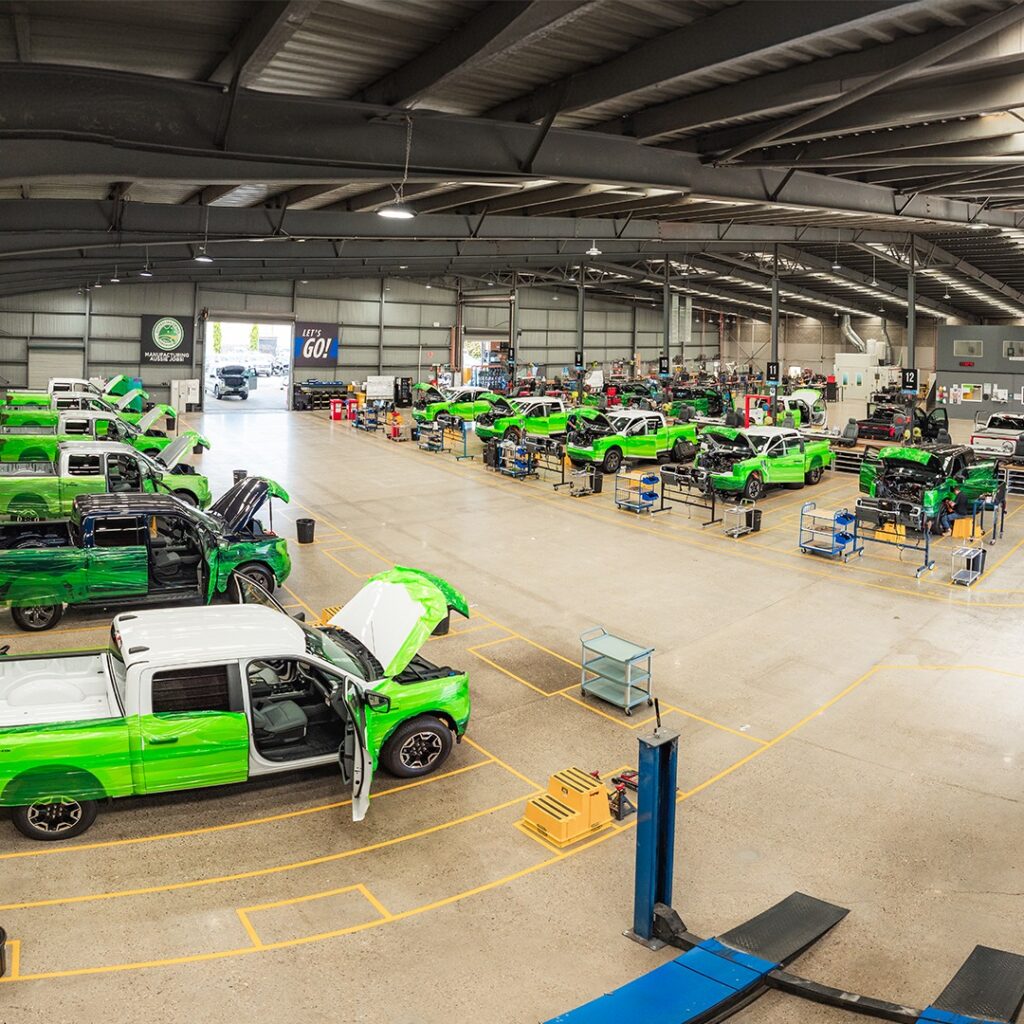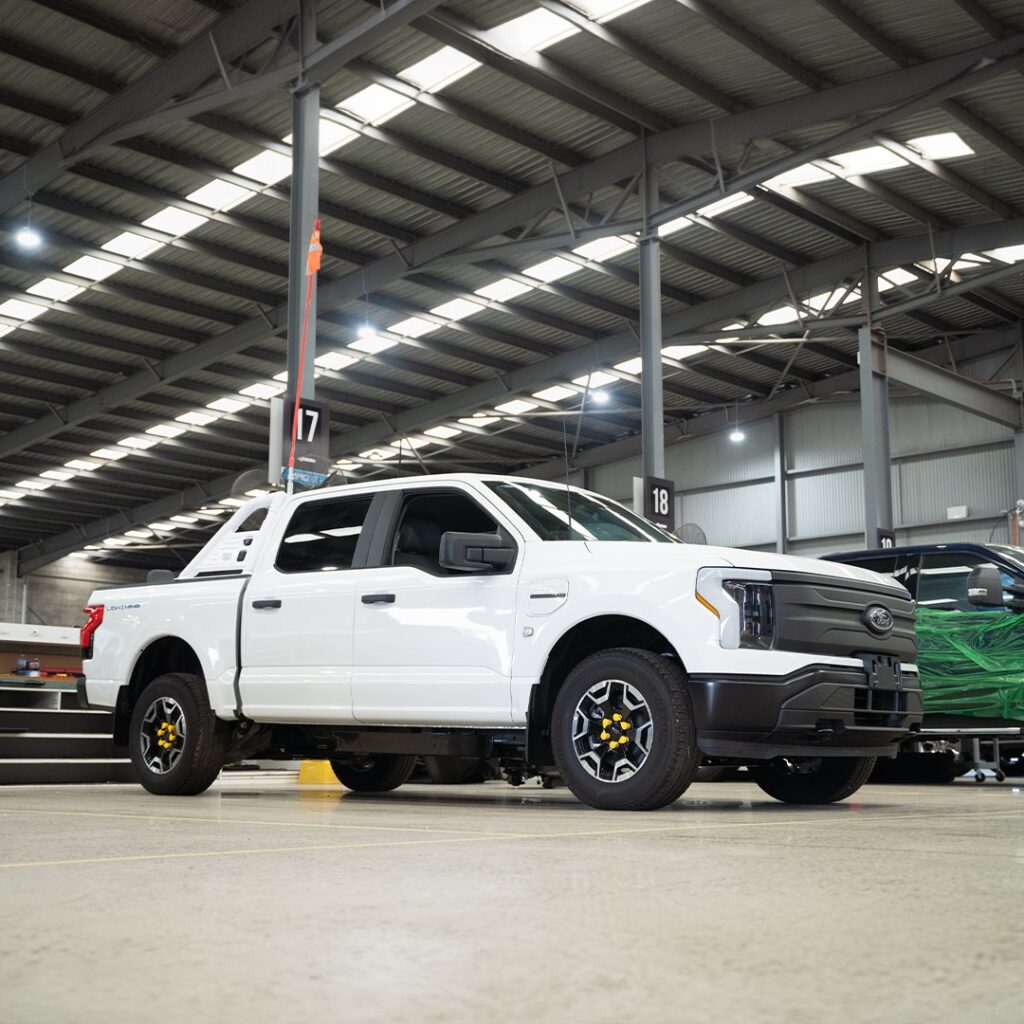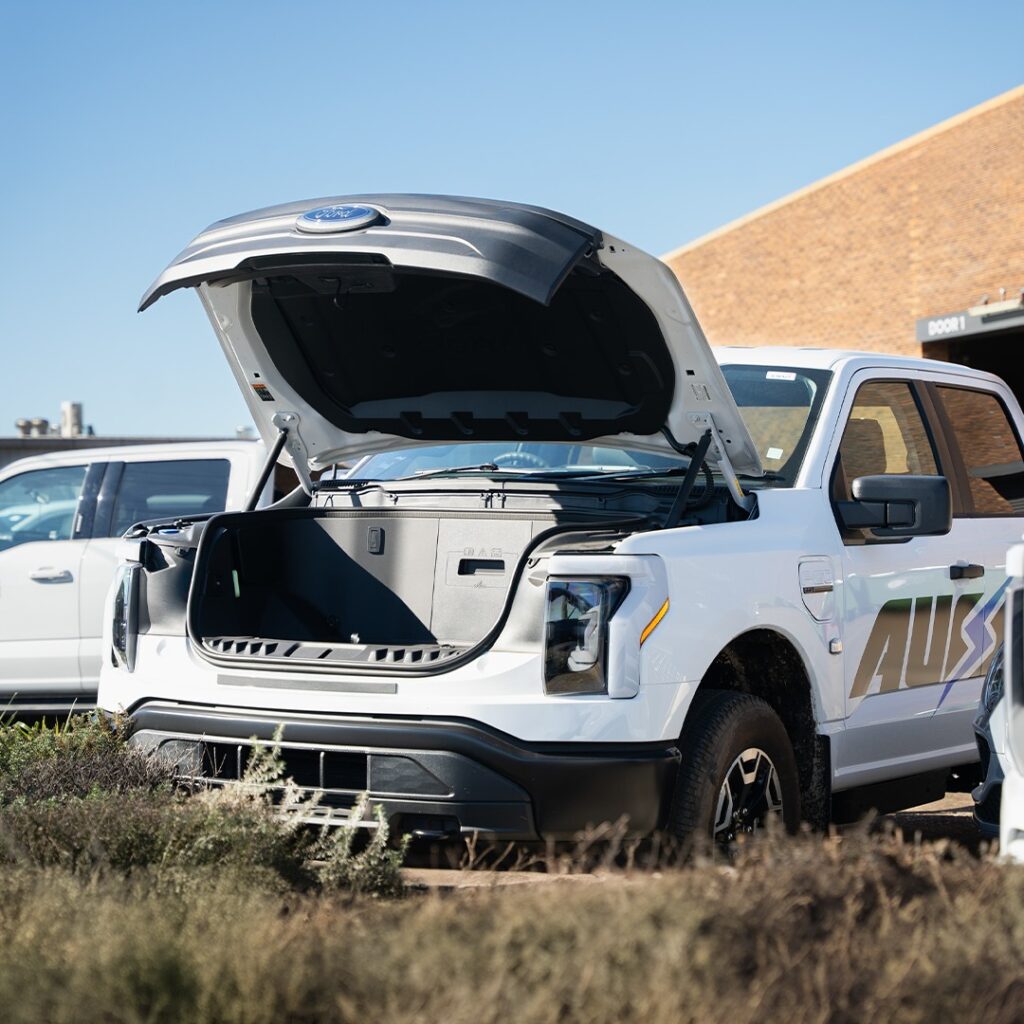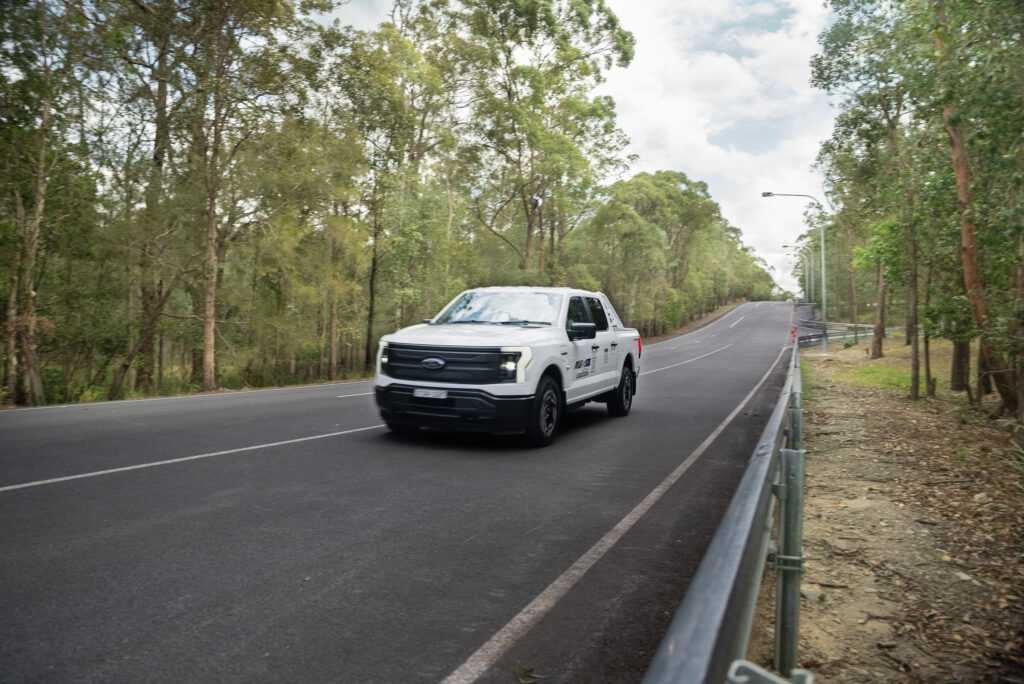The Ford F-150 Lightning is out and about on Australian roads, courtesy of distributor AUSEV, and we were recently given the keys to one to see if the hype is real…
Of course, Ford doesn’t produce a right-hand drive version of the F-150 Lightning but that hasn’t stopped AUSEV from bringing them into Australia for fleet customers that require a fully-electric 4×4 ute.
The Lightning vehicles are imported, converted to right-hand drive and sold through the BossCap Group of companies (under which AUSEV sits), with a remanufacturing operation out of Brendale in Brisbane’s northern suburbs.
This is nothing new for the team at Bosscap, either, bringing a decade of experience converting American pick-ups in Australia. A quick tour of their manufacturing facility showed just how refined the operation is, boasting a clean, organised and high-tech production line resembling that of an OEM.

The Lightning models are priced from $169,000 before fleet discounts are applied and while the price tag may deter some, BossCap Group Chief Commercial Officer, Alan Brady, says it’s important to consider that unlike many EVs the Lightning comes with no loss of productivity.
“While it does cost more than traditional diesel equivalents up front, it offers various benefits and in the long run can save fleets money,” he said.
“It’s also worth considering that this is closer in some ways to an electric truck, in terms of productivity and payload, which are comparatively priced yet don’t offer the luxuries of the Lightning.
“The Ford F-150 Lightning is the only 4×4 EV Ute which can save fleets operational dollars, protect data, and continue to support manufacturing jobs, and build the local economy. Equally important, is that it delivers decarbonisation without loss of real-world capability.”
For those wondering about after sales support, AUSEV offers a five-year/unlimited kilometre vehicle warranty and is even capable of providing on-site servicing and support for fleet customers.
“Having engineering and manufacturing operations in Australia means we can provide unrivalled backup support anywhere in the country, with our national mobile team,” Mr Brady said.
“This makes it a really viable option that is safe, extremely capable and exceeds emissions targets, while creating manufacturing and service jobs to build the local economy.”

The company also works with suppliers like GB Auto and Norweld to offer fit-out solutions, like its popular Site Safety Pack that features a mine-ready rollover protection system (ROPS), ADR-compliant lightning and a range of tray and tow pack options.
Customers so far include MPC Kinetic, Kuuwa Rentals, Brisbane Airport Corporation, Essential Energy and many more, as AUSEV sets its sights firmly on the fleet market. The all-important question, though, is how does it perform out on the road?
We were given the keys for a day, to test the F-150 Lightning out in the real world. We weren’t able to tow or test it fully loaded, but we spent enough time with the electric ute to establish whether it could be a winner for your fleet.
How does it drive?
Like a bat out of hell, which is unsurprising given its dual motors produce a combined 433kW/1050Nm – with all of that grunt available from the moment you touch the accelerator. It’s good for a 0-100km/h time of four seconds, which is around the same as a BMW M2, to put the performance into perspective.
Although, after the initial excitement wore off and we stopped flooring it at every opportunity, the Lightning became a comfortable, compliant and smooth drive across the day of testing. This is a more refined and practical electric ute than the slow sales start in the US suggested, although it’s now experiencing a serious surge in popularity over there too.
We’ve spent a lot of time in the petrol-powered F-150 and the Lightning is a very similar affair, albeit silent and far quicker leaving a set of lights. But it steers, rides and stops as good, if not better, than any 1500-class ute. Ford has done a tremendous job of its first electric ute.
It’s clearly built to work, too, with a more utilitarian layout than any other EV we’ve tested – from the shared F-Series interior to the work-ready tray options. It even has a ‘frunk’ that’s bigger than any other we’ve found in an EV, at 400 litres.

The remanufacturing is of an extremely high quality, too, with no signs of a right-hand drive conversion to be seen. In fact, you’d probably need to work on the assembly line to actually spot anything that gives its left-hand drive origins away.
In our eyes, the Lightning shines around town and in stop-start traffic where its momentous acceleration and powerful regenerative braking are put to work. However, out on the highway it’s whisper-quiet and remains efficient with energy use of around 25kWh/100km. Of course, it will also go properly off-road when required and even features a locking rear differential.
Ford appears to have been very honest with its claimed range of 514km for the long-range model, featuring the larger 131kWh battery, because across a day of testing, which included some hard use, the average energy consumption suggested a real-world range exceeding 500km.
We can only assume the Lightning’s driving range would drop when towing near its up to 4.5-tonne limit, or when carrying its maximum payload of 1000kg, but that would be the case with any vehicle – electric or otherwise.

Fleet verdict
So far, the AUSEV Lightning is the only OEM electric 4×4 ute on the market meaning it really doesn’t have any direct competitors. It’s a lot of ute for the money and, for fleet customers like utilities and mines, it ticks all the right boxes.
Sure, electric SUVs offer an on-road option with mild towing capabilities and electric light-duty trucks offer serious payload and towing, but neither offers the combination of electric productivity and off-road capability.
In our eyes, after a solid day of testing, the Lightning is a compelling all-electric fleet option for severe-duty industries like mining, utilities or even emergency services, particularly when you factor in AUSEV’s willingness to assist with the fit-out side of things.






